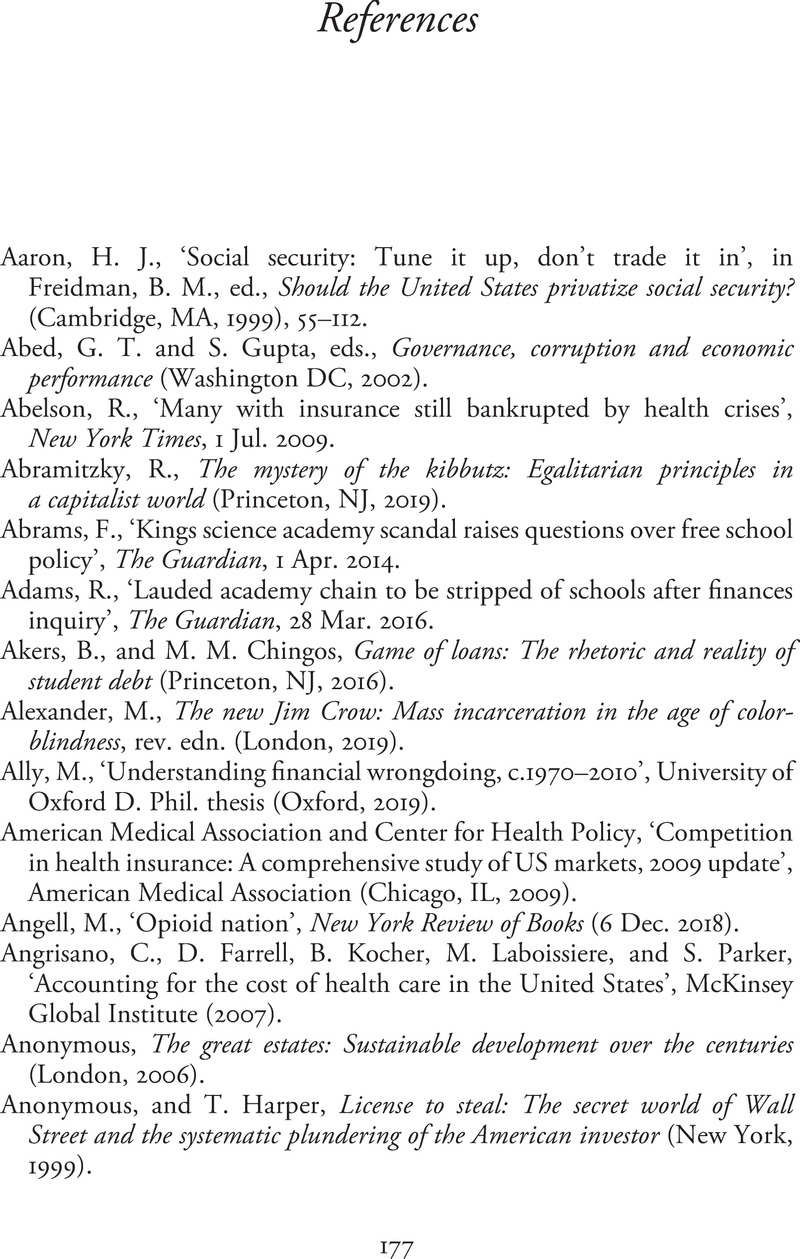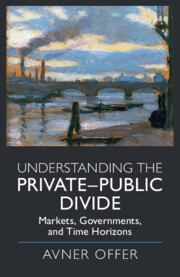Book contents
- Understanding the Private–Public Divide
- Understanding the Private–Public Divide
- Copyright page
- Dedication
- Contents
- Figures
- Tables
- Preface
- Abbreviations
- Introduction
- Chapter 1 Patient Capital
- Chapter 2 Corruption and Integrity
- Chapter 3 Plutocratic Blowback
- Chapter 4 Creating Humans
- Chapter 5 Exit from Work
- Chapter 6 Housing and Democracy
- Chapter 7 Climate Change and Time Horizons
- Conclusion
- References
- Index
- References
References
Published online by Cambridge University Press: 14 April 2022
- Understanding the Private–Public Divide
- Understanding the Private–Public Divide
- Copyright page
- Dedication
- Contents
- Figures
- Tables
- Preface
- Abbreviations
- Introduction
- Chapter 1 Patient Capital
- Chapter 2 Corruption and Integrity
- Chapter 3 Plutocratic Blowback
- Chapter 4 Creating Humans
- Chapter 5 Exit from Work
- Chapter 6 Housing and Democracy
- Chapter 7 Climate Change and Time Horizons
- Conclusion
- References
- Index
- References
Summary

- Type
- Chapter
- Information
- Understanding the Private–Public DivideMarkets, Governments, and Time Horizons, pp. 177 - 219Publisher: Cambridge University PressPrint publication year: 2022



